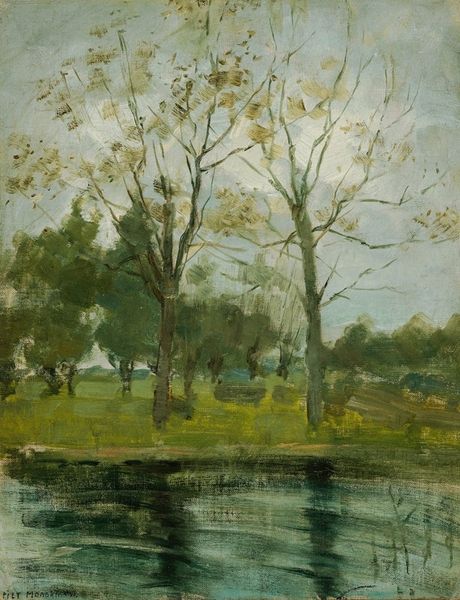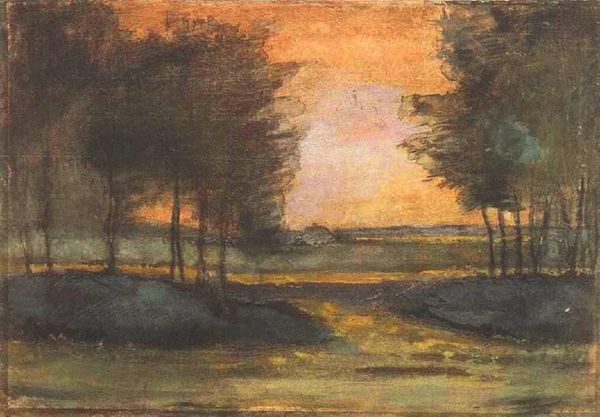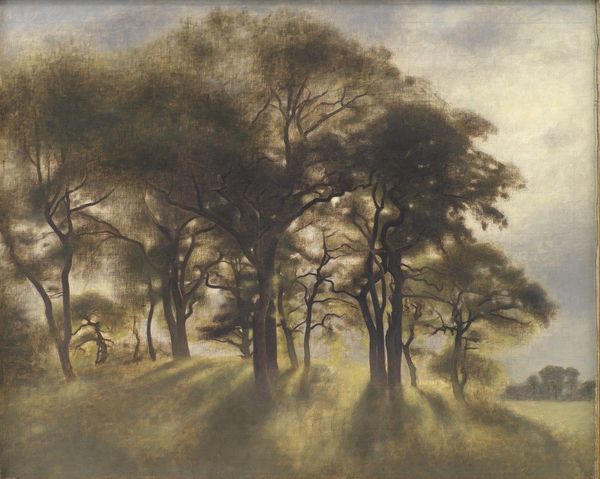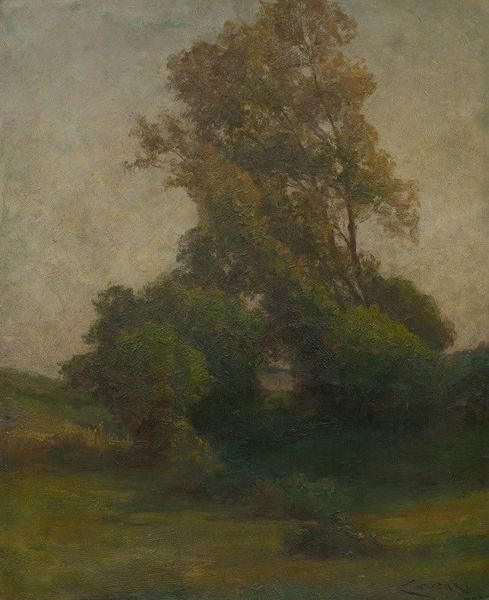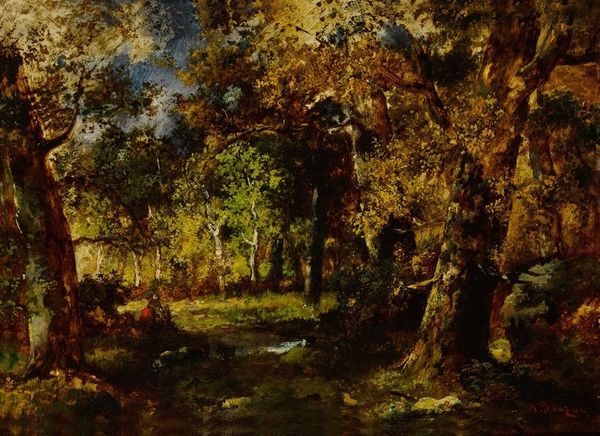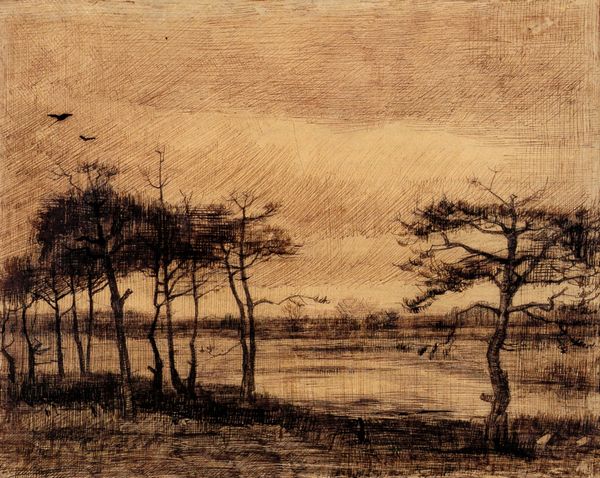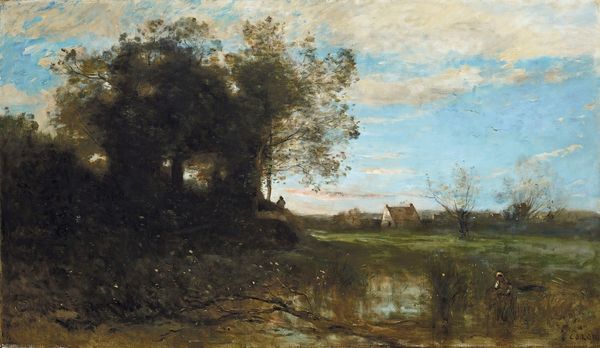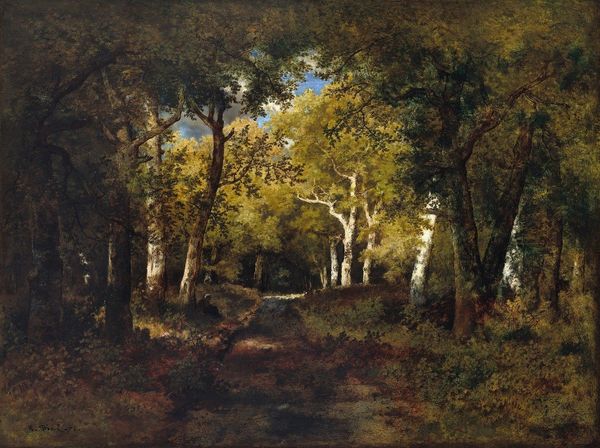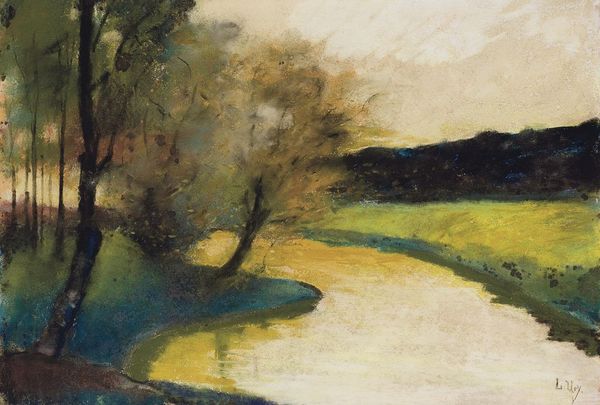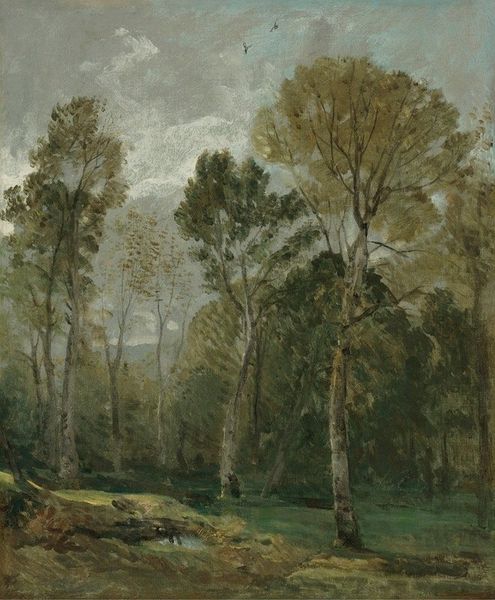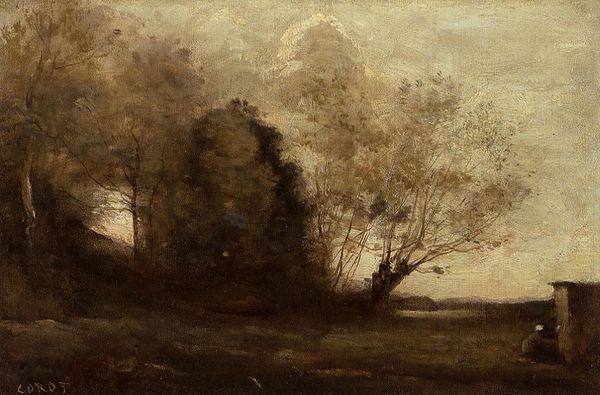
Copyright: Public domain
Editor: This is Gustave Moreau's "View of the Villa Borthese," painted in 1858. It looks like it was done *en plein air* with oil paint, and has an impressionistic, romantic feel to it. I find the shadows very interesting; they almost look like figures. What do you see in this piece? Curator: Well, immediately the grouping of the trees strikes me. Note how they're placed - almost like guardians. Moreau seems to use the Villa Borthese here not just as a location, but as a stage for exploring something deeper about nature and memory. Do you notice the way the light filters through the trees? Editor: Yes! It almost feels dreamlike, but with very solid forms in the foreground. Curator: Exactly. The shadows themselves become symbolic, perhaps representing the hidden aspects of the villa's history or even Moreau's own subconscious. What feelings do those hidden spaces evoke for you? Editor: A sense of mystery, almost like something's about to be revealed. I hadn't really thought about shadows carrying meaning, but it makes sense considering how much our memories can be shaped by what's obscured. Curator: Consider also how Moreau places the viewer. We're not strolling through this garden. We're set back, almost observers. This could reflect how memory itself positions us – distant, yet intimately connected. The villa is both present and somehow untouchable. Editor: It's like he’s using the villa as a vessel for universal themes. I really appreciate how you pointed out the interplay of light and shadow as something deeper. Thanks for that. Curator: And thank you. Considering how we connect to a place through imagery allows us to appreciate not just what's shown, but what the image evokes and preserves, from our cultural past and psychological present.
Comments
No comments
Be the first to comment and join the conversation on the ultimate creative platform.

